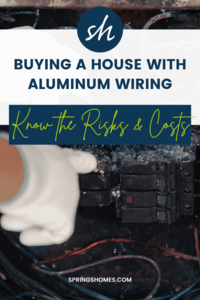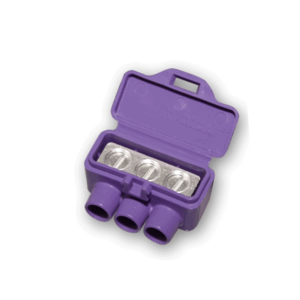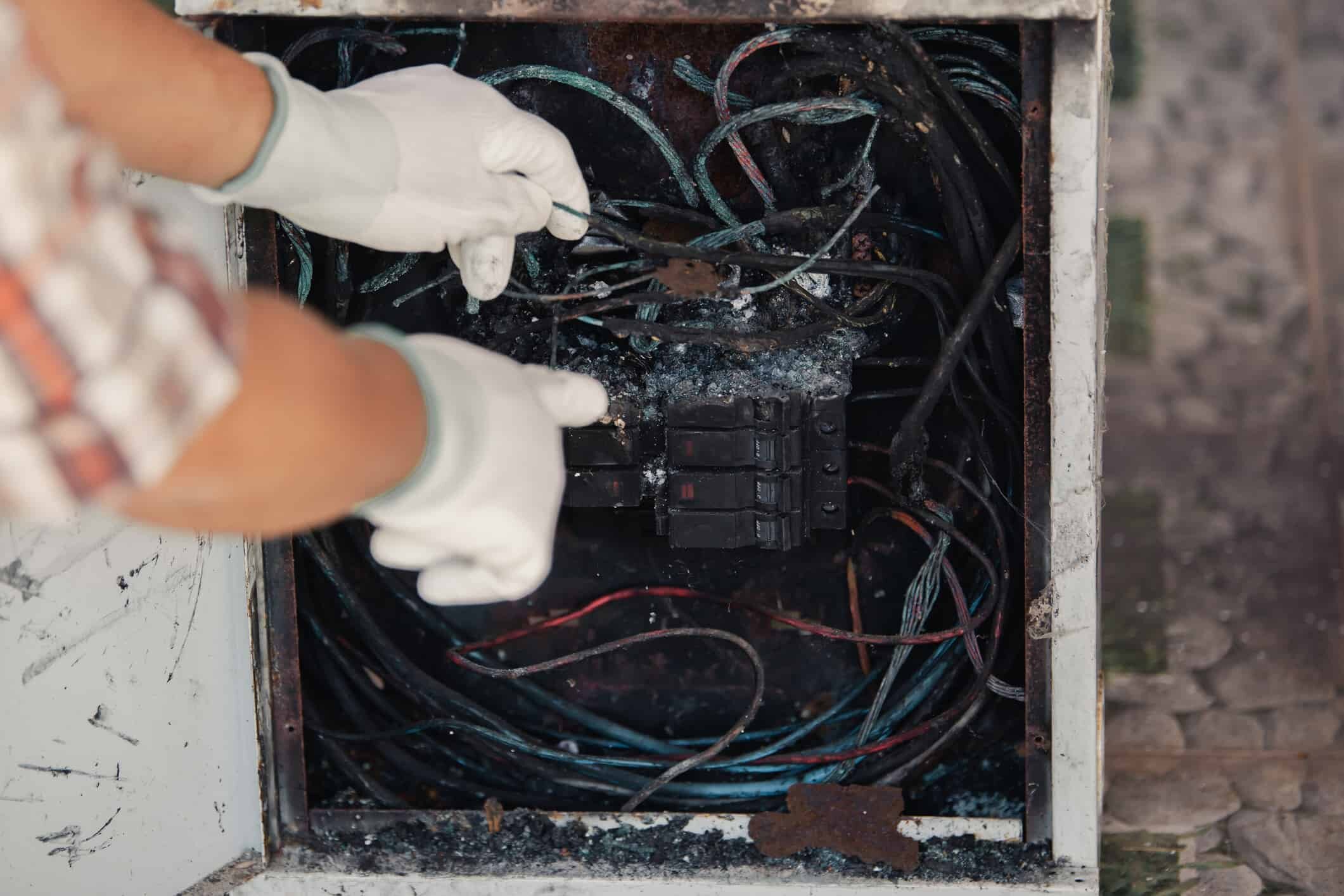Many homes built in the 60’s and early 70’s have aluminum interior wiring systems. Unfortunately, these systems can present a high potential for starting electrical fires in the home. Aluminum is a lower-cost alternative to copper which was traditionally used by home builders for a home’s electrical wiring system.
copper which was traditionally used by home builders for a home’s electrical wiring system.
Why Do Homes Have Aluminum Wiring?
Copper wiring has been the standard for wiring homes for a long time but In 1965 there was a copper shortage due to heavy use by the defense department during the Vietnam war. Copper prices were high and copper was scarce, this motivated home builders to look for lower-cost alternatives.
Aluminum wiring appeared to be a safe and effective alternative to copper wiring but problems began to occur soon after people began living in these properties. The aluminum wiring was creating fire hazard conditions, the aluminum wiring itself was safe if properly connected and terminated at the electrical panel, outlets, switch, or light fixture.
What’s Wrong with Aluminum Wiring?
The problem was that home builders and electricians were treating the aluminum wiring, in the same manner, they would copper wiring. This created three opportunities for the wire to fail and cause a fire.
- Creeping: As electricity flows through an aluminum wire, the wire heats up causing the aluminum to expand. When the electricity is turned off the wire cools down and contracts. This constant expansion and contraction can cause loose connections as the wires creep out of their connections. Eventually, this process can loosen the fittings enough to create space between the wire and the fixture. This allows electrical arcing to occur. Electrical arcing is when the electrical current flows through the air between two conductors. This arcing can cause fires, especially if it’s near flammable materials.
- Oxidation – When aluminum oxidizes, it becomes less conductive. Aluminum oxide and the resistance it creates restricts the flow of electricity which can cause overheating. The oxidation of copper does not produce this effect, as copper oxidizes, it actually remains electrically conductive.
- Damage – Aluminum is also softer than copper. Crimped, nicked, or pinched aluminum wires can be problematic as well. This type of damage can create hot spots which can also result in overheating.
According to the Consumer Product Safety Commission, there are approximately two million homes and mobile homes constructed using aluminum wiring since 1965. If you are shopping for resale homes, and they were built between 1965 and 1972, there is a good chance that you will end up looking at homes that have aluminum wiring.
If you have purchased a home with aluminum wiring you won’t really know if the home has it unless the home seller discloses it, or your home inspector discovers it during the property inspection.
What To Do If Your Home Has Aluminum Wiring?
If you have purchased a home or are considering buying a home with aluminum wiring you have a couple of options:
- Do nothing – This option is both dangerous and not recommended. In many cases, real estate agents or the current owner of a home will try to convince a potential buyer that the home’s electrical system is fine and that they have had “no problems”. This may be the case, but the aluminum wire issue and the electrical problems it creates are legitimate. Ignoring it won’t change the fact that this type of wiring causes electric problems. The presence of aluminum wiring in residential homes merits a conversation with an experienced electrician at a minimum.
- Rewire the entire property – This is by far the best solution and involves running new copper wiring from the electrical service panel to all switches and outlets. This is an expensive option, bids can range from $15,000 to $35,000. This option will also require sheetrock repair which adds to the cost.
- Pig tailing – This is the most common repair method for aluminum wiring repairs, this involves adding short copper wires to the end of the existing aluminum wires. There are several options available for creating copper pigtails. Some of which are not acceptable in certain jurisdictions, so be sure to check with a licensed local electrician before moving forward with any repairs. Here are the available options for pigtailing:
- Wire nuts – Twist-on wire nuts are the easiest way to pigtail wires. It’s important that you use approved wire nuts, regular wire nuts can overheat due to oxidation in the aluminum portion of the pigtail. Approved
 wire nuts will contain a compound that inhibits oxidation. The most popular brand is the Ideal Industries Twister® Al/Cu Wire Connector, Model 65, Purple Wire nut. In 1995, UL accepted a twist-on connector – the Ideal #65 “Twister” -for aluminum-to-copper wire combinations, including those commonly used in the “pigtailing” retrofit.
wire nuts will contain a compound that inhibits oxidation. The most popular brand is the Ideal Industries Twister® Al/Cu Wire Connector, Model 65, Purple Wire nut. In 1995, UL accepted a twist-on connector – the Ideal #65 “Twister” -for aluminum-to-copper wire combinations, including those commonly used in the “pigtailing” retrofit. - COPALUM (Copper Aluminum) connectors – This is another form of pigtail repair. COPALUM connectors are special connectors installed by a qualified licensed electrician, this is considered by the U.S. Consumer Product Safety Commission (“CPSC”) to be the preferred method for permanently repairing aluminum wiring in a home short of rewiring the entire home with copper. This connector is applied using a special crimping tool that makes the connection with extreme pressure. Once the connection is established an additional heat-shrink insulator is applied. COPALUM repairs can only be administered by an installer that has been trained and certified by the connector manufacturer.
- AlumiConn connectors – This is another method of pigtailing aluminum to copper connections. This connector became available in 2006. The CPSC accepts the AlumiConn connector as an acceptable repair in the event the COPALUM repair cannot be implemented. This connector uses set screws to connect the pigtail ends. As long as these screws are tightened to the manufacturer’s specifications, this connector is predicted to have a high probability of failure-free long-term safe performance.
- Wire nuts – Twist-on wire nuts are the easiest way to pigtail wires. It’s important that you use approved wire nuts, regular wire nuts can overheat due to oxidation in the aluminum portion of the pigtail. Approved
Homeowners Insurance with Aluminum Wiring
If you are using a mortgage loan to purchase your home, the lender is going to require that you purchase “homeowners or hazard insurance” to protect your home/their investment. Many insurance companies won’t insure homes that have aluminum wiring. You may need to shop around a little to find an insurance company that will still insure homes with aluminum wiring.
The best course of action is to perform one of the approved repair methods and then obtain certifications that repairs have been completed for the insurance company.
If you are selling a home with aluminum wiring, it would be in your best interest to go ahead and have any potential repairs made prior to putting the home on the market. This way potential buyers will know the repairs have been made. If you supply them with a certification from a licensed electrician, you will make the process of obtaining home insurance easier for them. Waiting until after the home inspection to deal with aluminum wiring can delay closing.
Additionally, some buyers might terminate the contract at the inspection phase of the transaction because they either don’t want to deal with the issue or don’t understand that there are solutions. Handling the problem before you put the home on the market eliminates a lot of potential problems.
Remodeling Homes with Aluminum Wiring
Older homes that were built in the 60’s and 70’s are great candidates for updating and remodeling because they now end up being located in pretty desirable neighborhoods. These areas have mature landscaping and tend to be in areas that have a lot of amenities, so the neighborhoods are very desirable.
Older homes with aluminum wiring do present a challenge when it comes to safety and obtaining homeowners insurance. The good news is that with appropriate mitigation, electrical work, and repairs, the risk can be minimized. This is good news for both home buyers and homeowners with aluminum wiring in their homes. There are a number of things to consider before buying an older home, aluminum wiring is just one and while conditions like this are common and while these conditions are not ideal, they are manageable. This is one of the reasons many people prefer to buy a new home, they are willing to sacrifice a mature neighborhood and location for the peace of mind a modern home brings.
At the end of the day it comes down to personal preference but most of the potentially hazardous conditions that come with owning an older home have solutions, unfortunately implementing these solutions often comes down to money.

